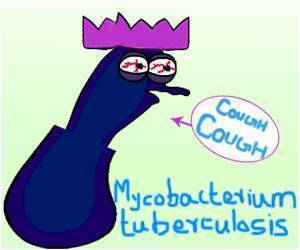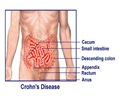Scientists have discovered three new locations for Crohn's Disease genes by means of novel gene mapping approach.

Now, three newly identified gene regions on chromosome 16 have filled in some of the missing gaps, as well as showing that different patients carry different sets of faulty genes. Published today in the American Journal of Human Genetics, the findings could pave the way for personalised treatment and also lead to improved understanding of how complex diseases are inherited.
Dr Nikolas Maniatis, senior author from the UCL Research Department of Genetics, Evolution and Environment, said: "This paper shows how personalised medicine could work and also help to separate out patients. For example, just as there are many different types of cancer with different underlying genes, it seems that there are also mutations in different genes for different types of Crohn's Disease."
The research team used UK data provided by the Wellcome Trust Case Control Consortium (WTCCC), which includes genetic information of 1698 CD patients. The team's results were also replicated using independent US data provided by the American National Institute of Diabetes and Digestive and Kidney Diseases (NIDDK), which contains genetic information of 813 patients with CD.
Instead of comparing lots of genomic sites, one at a time, across the entire genome, the team instead looked at segments of DNA, each of which contains many variable sites. They used a mapping technique based on refined genetic maps that have the ability to show how stretches of DNA have been passed down together through the generations. By taking this into account when analysing genetic information from patients with CD the team were able to localise the faulty genes.
Dr Maniatis said: "This project essentially maps the most likely location of faulty sites for Crohn's Disease in the genome. By combining several pieces of information together, our technique lets us increase the power of our analysis."
Advertisement
Dr Maniatis said: "These are very exciting times, as we can use these genetic maps to pinpoint where the causal sites of Crohn's Disease are located. Although it has been shown in the past that a proportion of patients suffering from Crohn's Disease do not carry the NOD2 mutations, up until now no other genes on chromosome 16 have been published in genome-wide analyses."
Advertisement
"Importantly the work also shows that this method will allow more information to be derived from the valuable datasets collected by organisations such as the Wellcome Trust. This method can also be used to analyse other complex disorders, allowing us to make similar progress on other diseases, such as diabetes and Parkinson's disease."
Source-Eurekalert












